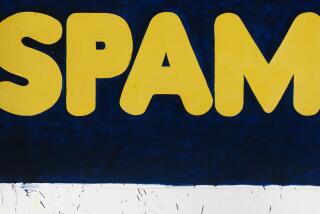Westwood
Long on style but lapsing into formula, Ron Blumbergâs palette knife paintings of Westwood during the 1950s and â60s have a lot in common with the environment theyâre shown in this time around. Westwood is fast becoming a glass and marble extension of downtown architectural banality. Blumbergâs paintings take a similar hackneyed approach to rendering architecture.
The artist lays in buildings with small flat blocks of color and tone that in their faceting recall the impressionistic color landscapes Cezanne painted at Aix. But Blumbergâs plays with space and color seem like a stylized formula, pat and predictable. Fortunately, the same isnât true of the more wild and wooly pieces of landscape painting that enmesh the fledgling city in a vast and rustic wilderness. In paintings like âBel-Air,â a green hillside is a tempestuous sea of mark and bubbling color that percolates into the distant ocean while awash with the white flotsam of small rooftops. The unpredictable strength of rampant nature in this work and in âFallen Treeâ reasserts the power of painting to bring an emotional reality to life like an updated Van Gogh. That sensitivity and emotion is the spark missing from the downtown city paintings. (Feingarten Galleries, Westwood Place, 10866 Wilshire Blvd., to Dec. 31.)--S.G.
More to Read
The biggest entertainment stories
Get our big stories about Hollywood, film, television, music, arts, culture and more right in your inbox as soon as they publish.
You may occasionally receive promotional content from the Los Angeles Times.










